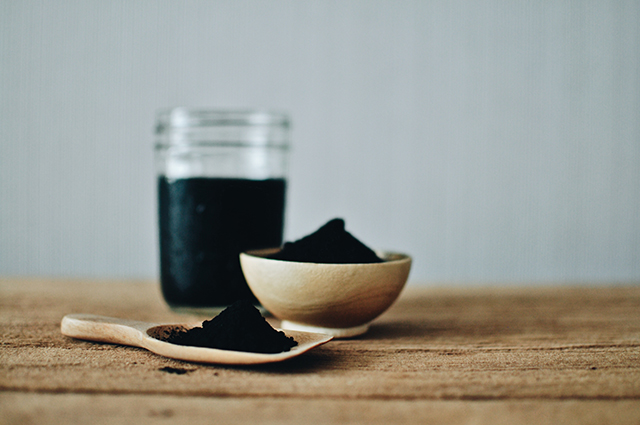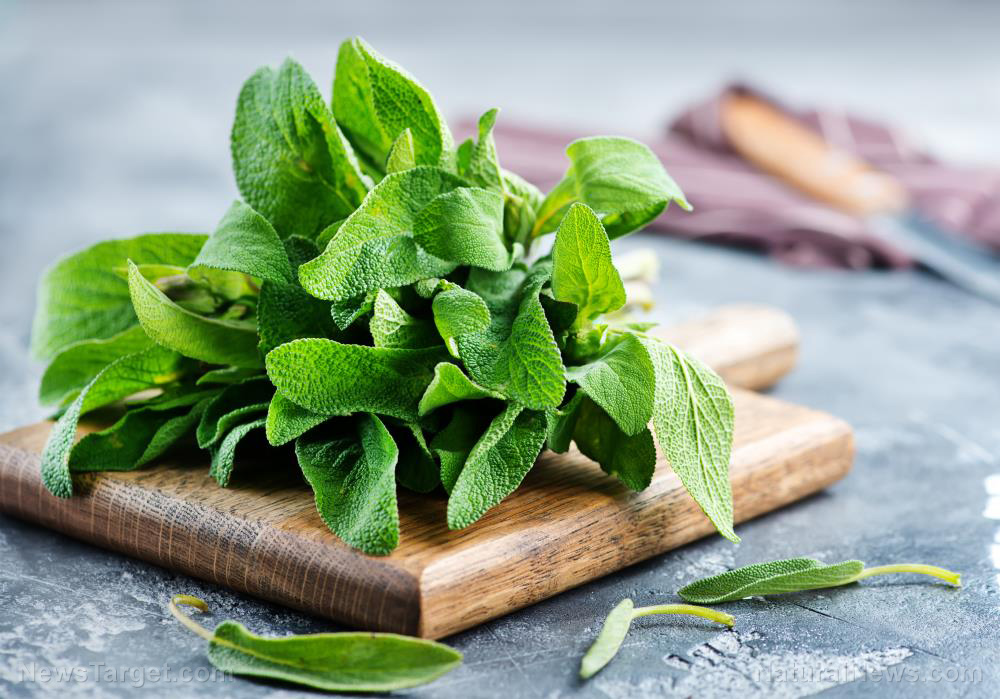Keep your garden soil healthy with crop rotation
11/07/2022 / By Zoey Sky

If you want your organic garden to succeed, you need to learn about crop rotation.
This practice involves rotating plant families from one season to the next, meaning you don’t plant related crops in the same location more than three years in a row. Doing this can help improve the soil quality in your garden. (h/t to PreppersWill.com)
Why is crop rotation important for a home garden?
Crop rotation helps maintain the balance of nutrients, organic matter and microorganisms needed for healthy garden soil. The practice is also good for the growth of beneficial soil-dwelling microorganisms.
If you grow potatoes in your home garden, they are vulnerable to fungi that create scabby skin patches and root-killing Verticillium fungi. Potatoes can also be affected by harmful nematodes that can grow throughout the season.
Planting potatoes repeatedly in the same location means these same pathogens will keep damaging your crops. Fortunately, you can deprive the potato pathogens of the host plant they require when the space is rotated to an unrelated crop.
While most pests and diseases can harm plants in the same botanical family, they can’t harm crops that are not related.
If you don’t use crop rotation, field investigations in Connecticut and Europe suggest that your potato yield will quickly drop by 40 percent, mostly due to disease.
Aside from breaking disease cycles, crop rotation helps reduce nutrient depletion. For example, tomatoes require a lot of calcium.
Note that the precise benefits of good crop rotations may vary depending on crop sequence:
- Broad-leafed greens are great at suppressing weeds.
- Nitrogen-fixing legumes frequently require less nitrogen from the soil than they replenish, and planting legumes helps promote the growth of good soil microbes.
- Sweet corn has strong roots that penetrate the compacted subsoil.
Crop rotation can be challenging at times, but don’t let this discourage you. When scientists from Pennsylvania State University tracked early blight of tomatoes planted in the same location for four years, results revealed that early-season infection rates, which are measured when five percent of the fruits became red, went up from only three percent in the first year to a whopping 74 percent in the third year
When the research team tried the same monoculture strategy with cantaloupes, Alternaria blight symptoms showed earlier with each consecutive season. (Related: Gardening tips: Learn about secondary nutrients that help nourish your garden plants.)
Some organic gardeners say that crop rotation rules designed for farmers aren’t suitable for home gardens. Crop residue is either plowed under or left on the surface to decay on farms, which can result in huge infusions of a particular type of plant material into the soil.
Meanwhile, home gardeners are more likely to pick up and compost spent crops. As a home gardener, you probably also dig in compost or other soil amendments between plantings to help replenish nutrients and invigorate the soil food web.
Biodegradable mulches also raise some concerns. If you thickly mulch potatoes with organic matter like crushed leaves, grass clippings, straw, or all three, you might also include those organic matter types in your rotation plans.
Keep in mind that pulling up plants won’t be enough to disrupt the food supply of soilborne plant diseases to the point that you no longer need to rotate crops.
Using a three-year crop rotation plan significantly minimizes the likelihood of crops like beans being affected by root rot, white mold and other major blights.
The eight-crop rotation technique
If you’re interested in following effective techniques, consider the eight-crop rotation technique designed by Eliot Coleman, a small-scale commercial farmer.
Coleman’s technique was developed with the help of decades of farm and garden research, and it’s useful for beginners who want to start an efficient crop rotation method.
Coleman’s list includes the following crops in this specific order:
Follow this plan if you have the space to only grow these eight crops in eight rows or beds. When you’re ready, arrange the crops in the correct order and move them one spot over yearly.
If this plan doesn’t seem feasible for your home garden, you will need a tailored strategy that relocates the primary plant families from one season to the next. In gardening, plant families are groups of crops that are linked and are vulnerable to many of the same pests and diseases.
Note that certain families will require more area than others. Tomato-family crops, like eggplant, peppers and tomatoes may require a lot of gardening space. Sweetcorn also requires a lot of space. But you only need a little gardening space for crops like beets, chard or spinach.
Start planning your rotations by establishing a list of your preferred crops and the amount of gardening space they require. Next, group them according to their corresponding plant family.
You also have to figure out which crop sequences will perform effectively in your home garden throughout the same growing season. Before you buy seeds or plants, check if the vegetables you want to grow will thrive in your designated United States Department of Agriculture (USDA) hardiness zone.
If you live in a cooler area, try a garlic/lettuce sequence. You can also try a broccoli/bush bean sequence, a snap pea/carrot sequence or an onion/leafy green series.
The nine main plant family groups
Make crop rotations easier by categorizing plants into the following key plant families:
- Cabbage family – Bok choy, broccoli, Brussels sprouts, cabbage, kale, kohlrabi and rutabagas
- Carrot family – Carrots, celery, parsnips and parsley
- Cucumber family – Cucumbers, gourds, melons and squash
- Grass family – Corn, oats, rye and wheat
- Onion family – Garlic, leeks, onions and shallots
- Pea family – Beans and peas
- Spinach family – Beets, chard and spinach
- Sunflower family – Belgian endive, chicory, curly endive, escarole, lettuce, radicchio and sunflowers
- Tomato family – Eggplant, peppers, potatoes and tomatoes
Planning tips for effective crop rotation
When planning your crop rotation schedule, you need two sheets of paper, a pen or pencil and scissors.
Start by drafting a crude design of your garden on one sheet and taking note of the proportions of beds or rows. Write down where you grew various crops last year.
Try to remember where you planted specific plants by picturing your garden at various stages during the season.
Copy the crops, plant family and crop sequences from your list onto the designated “crop markers” by cutting another piece of paper into smaller pieces that will go on the rows or beds in the garden drawing.
You might end up with markers for ten crops or crop sequences to cycle inside the twelve permanent beds in your garden. If there is extra space, set aside a pair of beds for experimentation.
Next, finalize your plan by rearranging the identified crop and plant family markers on the garden diagram. The goal is to have plantings travel in a logical order and direction. You can go left to right, front to back, or whatever pattern you decide.
If you’re not sure about a certain rotation of crops, plant some beans or leafy greens.
If you’re still undecided, keep drawing. Take breaks and think things through so you can have an easier time identifying some effective rotations for your home garden.
This kind of garden planning will prove useful after several years of fine-tuning. In your first year, keep track of the plants you grow in which space to stay organized.
Use a pen and notebook to track your crops using a planner, or use a spreadsheet on your phone or computer. This makes it easier to keep track of what you’re growing in each bed every season.
Before the next year, review your notes so you can plan ahead.
Different plants have different nutritional requirements and are vulnerable to many infections and pests. Don’t plant the same crops in the same spot every year to avoid draining the same nutrients out of the soil yearly.
Grow healthy crops and restore the nutrients in your garden soil with crop rotation. This beneficial gardening method will also help prevent pests and disease cycles from harming your plants and promote farm biodiversity.
Watch the video below for tips on how to grow potatoes in your home garden.
This video is from the Grow Together channel on Brighteon.com.
More related stories:
Home gardening: 3 Benefits of crop rotation.
Sustainable farming: 7 Indigenous practices to preserve crop and soil health.
Sources include:
Submit a correction >>
Tagged Under:
crop rotation, crops, Ecology, environment, gardening tips, green living, harvest, home gardening, homesteading, how-to, off grid, organic farming, preparedness, prepper, prepping, self sufficiency, soil health
This article may contain statements that reflect the opinion of the author
RECENT NEWS & ARTICLES
COPYRIGHT © 2017 GREEN LIVING NEWS




















